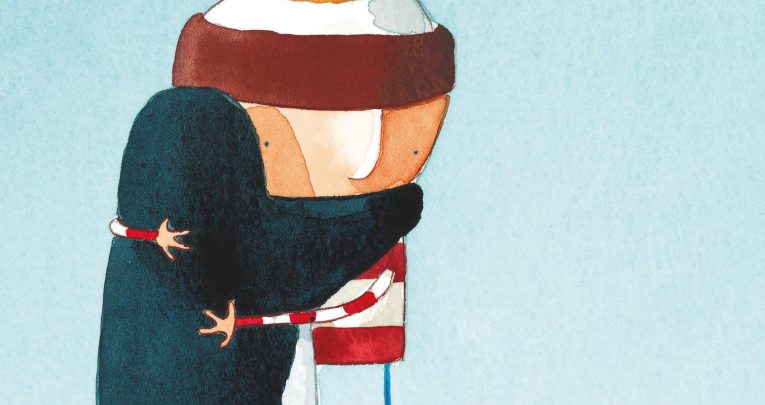Oliver Jeffers: “I May Have Been Described As A ‘Remedial’ Reader”

Don’t underestimate the importance of illustration for kick-starting a love of reading in children, says Oliver Jeffers…

In The Incredible Book Eating Boy, I played with a literal interpretation of the way children are sometimes described as ‘voracious’ readers who ‘devour’ books (doing this for real is not recommended, by the way; it’s very bad for the digestion) – but I was definitely not that sort of child myself. I was much more interested in going outside and playing, than losing myself in a story.
I was also, I suppose, rather anti-authoritarian, and not at all keen on doing anything that I had been told to do. So it wasn’t until much later, when I discovered books I wanted to read for myself, rather than those I’d been told to pick up, that I became an avid reader.
Also, although I don’t remember a time when I couldn’t read – I have no memories of looking at a piece of text and thinking, I don’t know what that says – I do recall having to go and get additional support when learning to read at school, and suspect I may have been described by my teachers as a ‘remedial’ reader at the time. A scatty attention span and clear preference for getting muddy and climbing trees rather than sitting on the carpet and ‘reading nicely’ probably had a lot to do with that.
Books were important in our house, though. My dad, in particular, was a great reader – he went through a book a week when I was young, and now he’s retired, it’s more like a book a day. He and my mum read to me and my brothers an awful lot, and I recall being especially drawn to the illustrations right from the start. I was and am much more of a ‘visual’ than a ‘words’ person, so when I was being read to, I would become completely absorbed in the pictures. Eric Carle’s The Bad Tempered Ladybird, for example, had a huge effect on me. I remember so well the sense of scale of it – the tiny ladybird having a fight with a giant whale, and all folded in the pages of the book in my dad’s hands. It was like a magic trick, and the images made it happen.
Brilliant illustrations are such an important part of nurturing readers. Whoever said ‘never judge a book by its cover’ was wrong; people do it every day, and the visual appeal of something is very, very important. Human beings make judgements all the time – great artwork can draw a child into a book; the wrong aesthetic can stop her picking it up at all. It’s no coincidence that Roald Dahl’s The BFG was one of the first books I read from start to finish, purely because I wanted to – it was as much Quentin Blake’s pictures, as Dahl’s storytelling, that appealed to me. And perhaps it was inevitable, given that my love of art started with picture books, that my career as an artist would include them in some way.
As well as The Bad Tempered Ladybird, books that have stayed with me from childhood include Maurice Sendak’s Where the Wild Things Are – an influential work for most illustrators – and Tusk Tusk, by David McKee. I’m also excited to see the new crop of talent that’s coming through, especially from Ireland, with people like Chris Haughton, for example (A Bit Lost; Oh No George!; Shh! We Have a Plan), and Kevin Waldron (Mr Peek and the Misunderstanding at the Zoo; Tiny Little Fly), who actually has a studio not far away from mine, in Brooklyn.
My recent collaboration with Eoin Colfer came about because we were both on the same circuit of literary festivals in Australia and New Zealand – at one point, we had to stand in front of a thousand or so people and tell a story; we followed straight after each other, and really enjoyed each other’s words. We met a few more times and easily agreed that we wanted to work together. It was a connection of imaginations, I suppose.
Imaginary Fred was an old idea that Eoin had kicking around and which came to the front of his mind as we were talking. As soon as he sent me the manuscript it all fell into place. Collaboration is very different from creating a picture book from scratch; this story arrived with me so resolved and direct (I made a few suggestions, but the words are entirely Eoin’s), illustrating it required a process that’s totally unlike building a concept from the beginning. Geographically, Eoin and I are nowhere near each other; creatively, however, we were very much on the same page for this project. It was a very respectful experience, with each partner having full trust in the other’s ability, and no arguments or drama – collaboration at its best.











